 "ttyymmnn" (ttyymmnn)
"ttyymmnn" (ttyymmnn)
02/19/2016 at 12:35 • Filed to: Planelopnik, planelopnik history
 11
11
 4
4
 "ttyymmnn" (ttyymmnn)
"ttyymmnn" (ttyymmnn)
02/19/2016 at 12:35 • Filed to: Planelopnik, planelopnik history |  11 11
|  4 4 |
Welcome to This Date in Aviation History , getting you caught up on milestones and important historical events in aviation from February 17 through February 19.
!!! UNKNOWN CONTENT TYPE !!!
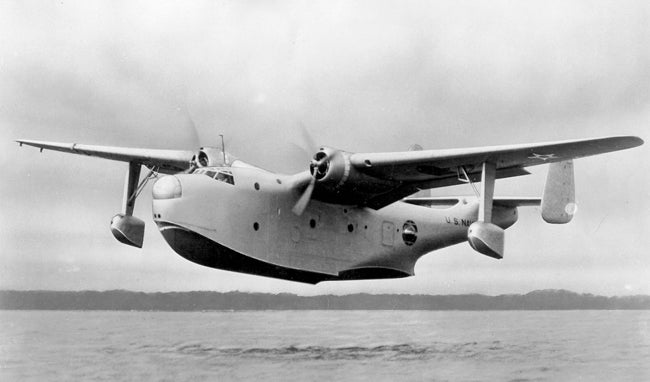
February 18, 1939 – The first flight of the Martin PBM Mariner.
From the earliest days of the airplane, and throughout WWII, the US Navy saw the seaplane as a vital tool for maritime surveillance, search and rescue, and defense against submarines. With the coming of WWII, and particularly the war in the Pacific, the Navy now had vast reaches of ocean to cover, a duty that was well-suited to far-ranging flying boats. To satisfy that need, the Navy turned to the Glenn L. Martin Company, who had a long history of building large aircraft, especially flying boats, a history that traces all the way back to the 1920s with
!!!error: Indecipherable SUB-paragraph formatting!!!
(an aircraft originally designed by Consolidated as the P2Y). In 1937, the Martin Company designed a new, large flying boat, the Model 162, to replace the earlier Martin P3M and to compliment the smaller
!!!error: Indecipherable SUB-paragraph formatting!!!
. The new design was a considerable improvement over its earlier sibling, and was recognizable for its cantilevered gull wing, a feature that extended into its dihedral tail. Powered by a pair of
!!!error: Indecipherable SUB-paragraph formatting!!!
radial engines, the Mariner was capable of speeds of just over 200 mph and a range of 2,600 nautical miles. For defense, the Mariner bristled with 5 gun turrets, and had wing floats that could be retracted during flight to reduce drag and extend range, though later models reverted to fixed floats. The Mariner entered service with the Navy on September 1, 1940, and began by performing
!!!error: Indecipherable SUB-paragraph formatting!!!
in the Atlantic from bases in the US and Iceland. Following the attack on Pearl Harbor and America’s entrance into WWII, Mariners performed anti-submarine patrols in the Atlantic, and were credited with sinking 10 German U-boats. PBMs were flown widely in the Pacific, where they operated from bases in Saipan, Okinawa, Iwo Jima and throughout the South West Pacific theater of war. The Mariner also served the US Coast Guard, where it became the premiere aircraft for long range search and rescue missions into the mid-1950s. And the PBM continued serving during the Korean War, where it performed maritime patrol missions along the Korean coast. In addition to its service with the US Navy and Coast Guard, the Mariner was also exported to Britain, who eventually transferred their aircraft to Austraila, and the Netherlands, where the Royal Netherlands Navy operated them in Netherlands New Guinea. When production of the Mariner ceased in 1949, Martin had produced a total of 1,366 PBMs, and its duties were eventually taken over by the more advanced
!!!error: Indecipherable SUB-paragraph formatting!!!
, which entered service in 1952.
(US Navy photo)
!!! UNKNOWN CONTENT TYPE !!!
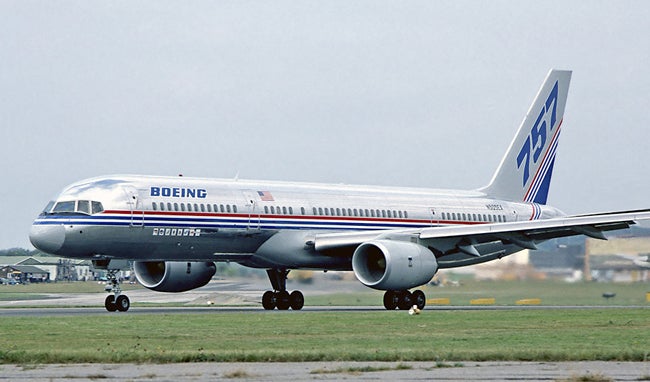
February 19, 1982 – The first flight of the Boeing 757.
For whatever reason, February has been a very busy month in the history of the Boeing Company. This month has seen the maiden flight of the
!!!error: Indecipherable SUB-paragraph formatting!!!
, the
!!!error: Indecipherable SUB-paragraph formatting!!!
, the
!!!error: Indecipherable SUB-paragraph formatting!!!
, the
!!!error: Indecipherable SUB-paragraph formatting!!!
, the
!!!error: Indecipherable SUB-paragraph formatting!!!
, and the
!!!error: Indecipherable SUB-paragraph formatting!!!
. And completing that list of February first flights is the 757, which first took to the skies on February 19, 1982. By the early 1970s, Boeing had to decide what to do with the 727. While the tri-jet had become Boeing’s biggest seller, airlines were looking for an airliner with more seats, but also one that didn’t sacrifice the 727's ability to operate from shorter runways. At first, Boeing considered revamping the 727, stretching it further than the already-lengthened 727-200, or develop an entirely new airplane, dubbed the 7N7 at the time. Although it would have been cheaper to develop the established 727, airlines were showing greater interest in aircraft equipped with more efficient high-bypass turbofans. These gave significant fuel savings over the older low-bypass engines that drove the 727. Eventually, with firm commitments from Eastern Air Lines and British Airways in 1978, Boeing decided to go ahead with the new airliner. For the first time, a Boeing airliner would be powered by engines produced outside the US, as Eastern and BA both opted for the
!!!error: Indecipherable SUB-paragraph formatting!!!
turbofan. Later, when Delta signed on with the 757, they would select Pratt & Whitney engines. Since the 757 was being developed alongside the widebody
!!!error: Indecipherable SUB-paragraph formatting!!!
, both jets shared common elements, such as identical, two-person flight decks which removed the flight engineer, and computerized glass cockpits. This meant that pilots who were rated on the 757 could also be qualified to fly the 767. Similar to the process in place at Boeing’s competitor Airbus, Boeing farmed out about half of the aircraft’s components to manufacturers across the US, and final assembly took place at Boeing’s facility in Renton, Washington. The prototype was rolled out on January 13, 1982, and it’s maiden flight took place one week ahead of schedule, followed by 7 months of testing. During tests, the 757 performed better than expected. The aircraft had come out 3,600 pounds lighter than projected, and the Rolls-Royce engines burned 3% less fuel than expected. Eastern Air Lines made the first commercial flight on January 1, 1983, with British Airways following a month later. Though sales of the 757 were sluggish throughout the 1980s, development of the 757 continued, first with the 757-200PF freighter, followed by the 757-300, a stretched version that can accommodate as many as 295 passengers in a single class configuration, making it the longest single-aisle twin-jet ever produced. The 757 has proven popular as a flying testbed, and the US Air Force has adopted the airliner as the C-32, a VIP aircraft that, among other duties, is used to transport the Vice President of the United States. And in 1991, in a display of the 757's short field prowess, and as a testament to the power of modern jet engines, a 757 took off from the Gonggar Airport in Tibet at an elevation of 11,621 feet, circled and landed safely all on a single engine. With the advent of the latest versions of the 737 and the 787 Dreamliner, Boeing decided to shutter the 757 production line in 2005 after building 1,050 aircraft. With the halt in 757 production, Boeing now has a significant gap in capacity between the 180-seat
!!!error: Indecipherable SUB-paragraph formatting!!!
and the 242-seat
!!!error: Indecipherable SUB-paragraph formatting!!!
. And with serious competition from Airbus, Boeing has to decide how to move forward and fill the void left by the venerable 757.
(Photo by Steve Fitzgerald via
!!!error: Indecipherable SUB-paragraph formatting!!!
)
!!! UNKNOWN CONTENT TYPE !!!
Short Take Off
!!! UNKNOWN CONTENT TYPE !!!
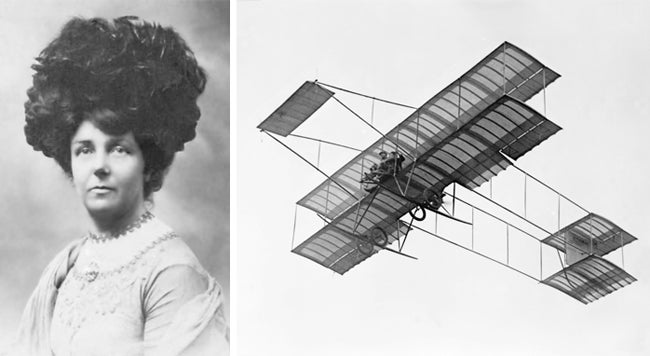
February 17, 1864 – The birth of Hilda Beatrice Hewlett, who, in 1911, became the first British woman to earn a pilot license. After attending her first aviation meeting at Blackpool in 1909, Hewlett adopted the pseudonym “Grace Bird” and began studying aeronautics, later opening a flying school at the Brooklands racing circuit with business partner !!!error: Indecipherable SUB-paragraph formatting!!! . Among her pupils was Thomas Sopwith, founder of the Sopwith Aviation Company. Hewlett also taught her son to fly, and he went on to a distinguished career in the military, earning the Distinguished Service Order in 1915. The company she formed with Blondeau began building Farman, Caudron and Hanriot aircraft, eventually producing more than 800 aircraft and employing 700 workers. Hewlett died in 1943.
!!! UNKNOWN CONTENT TYPE !!!
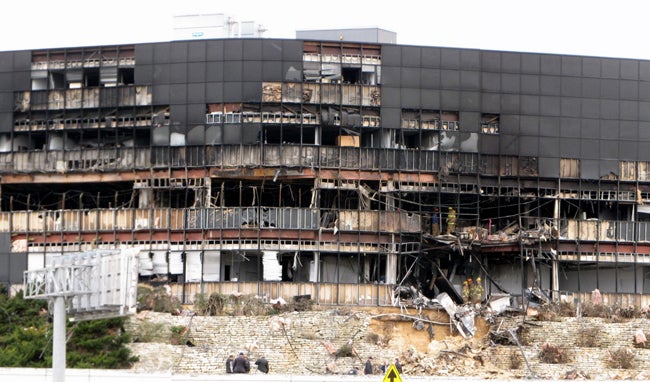
February 18, 2010 – Andrew Joseph Stack, III, crashes his airplane into the IRS offices in Austin, Texas.
Following a long-running feud with the IRS, and currently undergoing an audit over the IRS’s claims that he failed to report income, Stack wrote a
!!!error: Indecipherable SUB-paragraph formatting!!!
, set fire to his home, and headed to the Georgetown Municipal Airport north of Austin. He took off in his
!!!error: Indecipherable SUB-paragraph formatting!!!
, which investigators believe may have been loaded with drums of fuel, and after flying for 10 minutes he crashed the plane into the Echelon I building in north Austin, which contained an IRS office with 190 employees. The crash killed Stack and one IRS employee, Vernon Hunter, and injured 13 others, 2 seriously. The attack cost the IRS nearly $40 million dollars to upgrade security at offices around the country, and led to debate over taxpayer rights and tax protest policies. The Echelon I building was repaired by November 2011.
(Damage photo by Jasleen Kaur via
!!!error: Indecipherable SUB-paragraph formatting!!!
)
!!! UNKNOWN CONTENT TYPE !!!
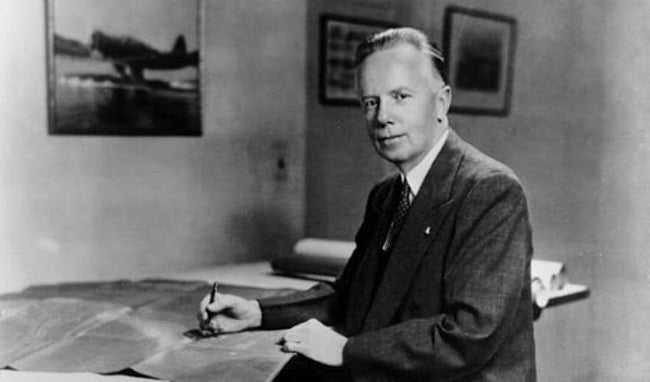
February 18, 1981 – The death of Jack Northrop,
an American industrialist and aircraft designer who founded the
!!!error: Indecipherable SUB-paragraph formatting!!!
in 1939. Born in 1895, Northrop began his career as a draftsman for the
!!!error: Indecipherable SUB-paragraph formatting!!!
, then joined the
!!!error: Indecipherable SUB-paragraph formatting!!!
in 1923 before returning to Lockheed where he served as the chief engineer on the
!!!error: Indecipherable SUB-paragraph formatting!!!
project. Northrop is perhaps best known for his development of the flying wing, producing the
!!!error: Indecipherable SUB-paragraph formatting!!!
and
!!!error: Indecipherable SUB-paragraph formatting!!!
bombers for the US Air Force. Though his flying wing designs were never adopted, Northrop eventually would be vindicated for his efforts with the development of the
!!!error: Indecipherable SUB-paragraph formatting!!!
stealth bomber, which first flew in July 1989. Following the failure of the YB-49, a despondent Northrop took almost no part in his company. But shortly before his death, B-2 designers allowed him to see the plans and a scale model for the new bomber. Northrop, ill and unable to speak, reportedly wrote, “Now I know why God has kept me alive for 25 years.”
(Photo author unknown)
!!! UNKNOWN CONTENT TYPE !!!

February 18, 1977 – The first flight of the Space Shuttle
Enterprise
atop the Boeing 747 Shuttle Carrier Aircraft (SCA)
. In this, the first of five “captive-inactive” flights, the Shuttle was unmanned, and engineers tested the flight characteristics of the mated aircraft. The rear of the Shuttle was covered with an aerodynamic tail cone to reduce the effects of drag on the SCA’s horizontal stabilizer, which was fitted with tip fins for added stability. The
!!!error: Indecipherable SUB-paragraph formatting!!!
used as the first SCA was originally delivered to American Airlines in 1970 before being purchased by NASA for use in wake vortex studies. It would eventually receive the official NASA livery. NASA operated two SCAs to transport the Shuttle from landing sites back to the Kennedy Space Center for their next launch.
(NASA photo)
!!! UNKNOWN CONTENT TYPE !!!
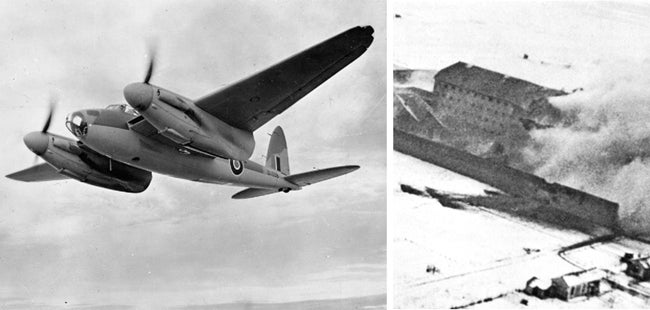
February 18, 1944 – Operation Jericho is carried out. Operation Jericho was a daring, low-level mission flown by the RAF into German-occupied France to drop bombs on a prison in order to breach its walls and free the prisoners, many of whom were French Resistance fighters or political prisoners. Two Allied intelligence officers were also held. Eighteen RAF !!!error: Indecipherable SUB-paragraph formatting!!! bombers (only 9 made it to the target), escorted by 14 !!!error: Indecipherable SUB-paragraph formatting!!! , took off from Hunsdon Airfield in southeast England and, despite terrible weather, the mission succeeded in breaching the walls of the prison. Of the 717 prisoners, 37 were killed in the raid and 74 were wounded, but 258 escaped, including 79 Resistance fighters. However, two-thirds of the escapees were soon recaptured. Three Mosquitos and 2 Typhoons were lost, with 3 pilots killed and 3 captured. As a reprisal for the raid, the Nazis executed 260 prisoners, and there remains controversy over whether the mission was necessary. (UK Government photos)
!!! UNKNOWN CONTENT TYPE !!!

February 19, 2002 – The first flight of the Embraer E-170, a single-aisle, twin-engined regional airliner produced by Brazilian firm Embraer as part of their E-jets line of commercial and business airliners. The E-170 was launched at the Paris Air Show in 1999, entered service in 2002, and has been one of the more successful undertakings by Embraer. The 170 features four-abreast seating, and its double-bubble fuselage enough headroom for passengers to stand in the aisle. As of the end of 2015, Embraer had produced nearly 1,200 E-170s, with a backlog of 249 firm orders yet to be filled. The 170 seats up to 80 passengers in a single class configuration, and the stretched E195 seats up to 122. (Photo by Andre Wadman via !!!error: Indecipherable SUB-paragraph formatting!!! )
!!! UNKNOWN CONTENT TYPE !!!
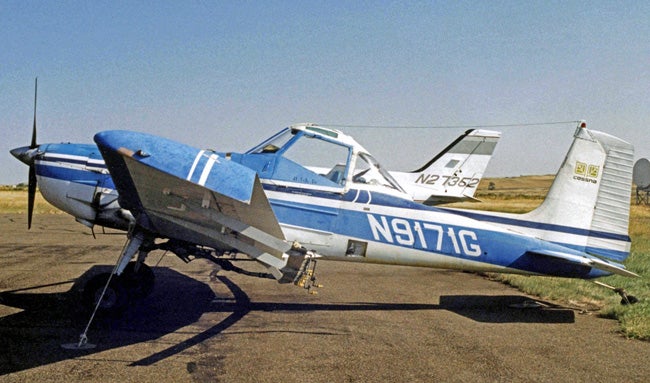
February 19, 1965 – The first flight of the Cessna 188,
the first in a family of agricultural aircraft that includes the AGwagon, AGpickup, AGtruck, AGhusky, and AGcarryall. Cessna began working on an agricultural aircraft in the 1960s, borrowing heavily from their
!!!error: Indecipherable SUB-paragraph formatting!!!
. The 188 features a single seat, a strut-braced wing, is constructed primarily from aluminum, and employs a fiberglass hopper for agricultural chemicals. The series has proven to be wildly successful, and nearly 4,000 AG planes were constructed between 1966-1983. In addition to its agricultural duties, the 188 also serves as a glider and sailplane tug and for pulling advertising banners.
(Photo by RuthAS via
!!!error: Indecipherable SUB-paragraph formatting!!!
)
!!! UNKNOWN CONTENT TYPE !!!
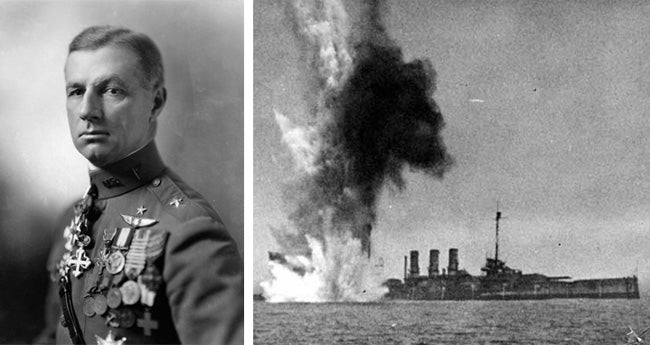
February 19, 1936 – The death of William “Billy” Mitchell.
Mitchell was born in 1879, and by the end of WWI he had risen to command all American air combat units in France. Following the war, he was a major proponent of air power, and in 1921, Mitchell organized a landmark demonstration of the effectiveness of air power when aircraft sank the captured German battleship
!!!error: Indecipherable SUB-paragraph formatting!!!
, though throughout the orchestrated attacks the
Ostfriesland
never mounted any defense. Mitchell espoused the theories of Italian theorist
!!!error: Indecipherable SUB-paragraph formatting!!!
, who advocated that bombers alone would be capable of winning a war, and Mitchell’s views had a profound influence on American strategic bombing practices during WWII.
(US Army photos)
!!! UNKNOWN CONTENT TYPE !!!
!!! UNKNOWN HEADER TYPE (MULTI-LINE BREAK?) !!!
!!! UNKNOWN CONTENT TYPE !!!
!!! UNKNOWN CONTENT TYPE !!!
!!! UNKNOWN CONTENT TYPE !!!
!!! UNKNOWN CONTENT TYPE !!!
If you enjoy these Aviation History posts, please let me know in the comments. And if you missed any of the past articles, you can find them all at
!!!error: Indecipherable SUB-paragraph formatting!!!
.
!!! UNKNOWN CONTENT TYPE !!!
 Smallbear wants a modern Syclone, local Maple Leafs spammer
> ttyymmnn
Smallbear wants a modern Syclone, local Maple Leafs spammer
> ttyymmnn
02/19/2016 at 12:46 |
|
In the end, Boeing ended up stretching a 727 anyway. And a 737, 720 and 707.
The fact that Boeing is still using a fuselage designed in the 50's gives me a kick every time I get an opportunity to bring it up. Though you’re probably getting sick of hearing about it by now :)
 ttyymmnn
> Smallbear wants a modern Syclone, local Maple Leafs spammer
ttyymmnn
> Smallbear wants a modern Syclone, local Maple Leafs spammer
02/19/2016 at 12:51 |
|
Not at all. Keep it coming. And thanks for reading.
 Brian, The Life of
> ttyymmnn
Brian, The Life of
> ttyymmnn
02/19/2016 at 13:08 |
|
These are always relevant to my interests :’)
 ttyymmnn
> Brian, The Life of
ttyymmnn
> Brian, The Life of
02/19/2016 at 13:09 |
|
Excellent! Thanks for reading.